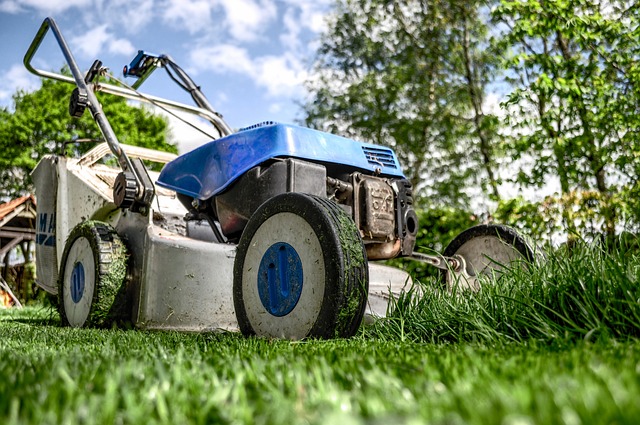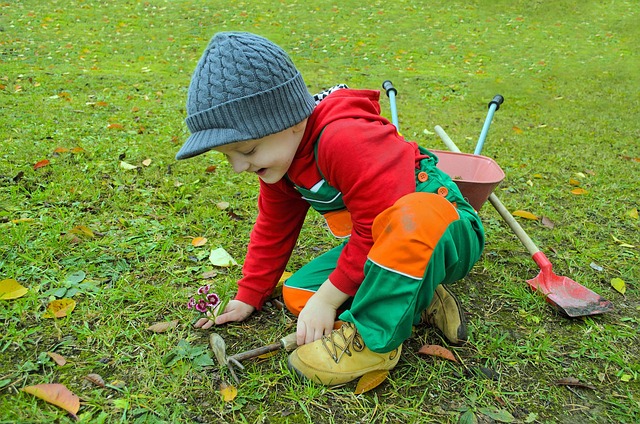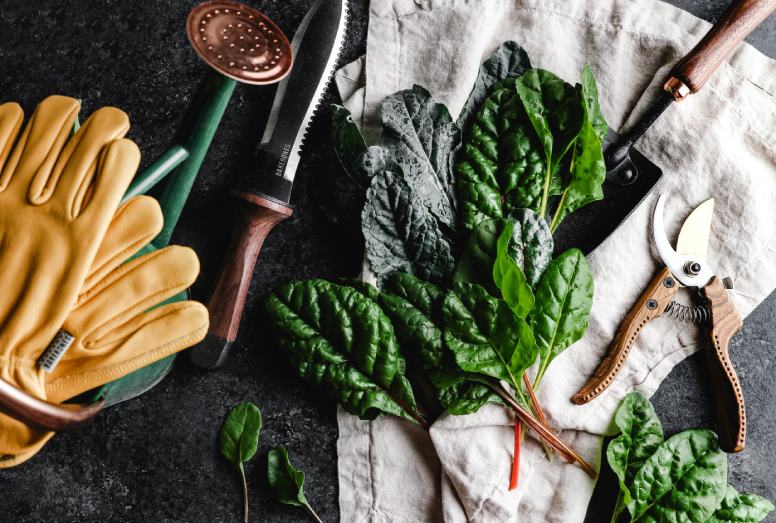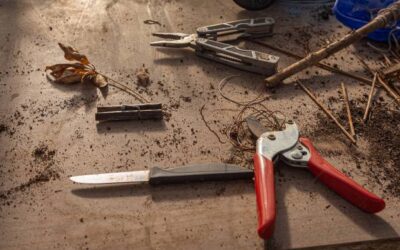In this article, you will learn about the factors to consider when deciding whether to do your own Japanese garden tool maintenance or seek professional help. Taking care of your garden tools is important to ensure their longevity and performance. By understanding the benefits and drawbacks of DIY maintenance versus hiring a professional, you can make an informed decision that best suits your needs.
When it comes to maintaining your Japanese garden tools, there are certain situations where seeking professional help is advisable. For example, if you are not confident in your ability to properly clean and sharpen the tools, it may be wise to consult a professional. Additionally, if you have expensive or specialized tools that require specific knowledge and skills to maintain, a professional can ensure they are cared for correctly. However, if you enjoy working on and taking care of your tools yourself, and have the necessary knowledge and skills, DIY maintenance can be a rewarding and cost-effective option. Ultimately, the decision to seek professional help in Japanese garden tool maintenance will depend on your comfort level, expertise, and the specific needs of your tools.

Introduction
Maintaining your Japanese garden is not only essential for preserving its beauty but also for ensuring the longevity of your tools. This article will discuss the importance of Japanese garden tool maintenance and help you understand when it’s best to tackle the tasks yourself or seek professional help. By finding the right balance between DIY maintenance and professional assistance, you can enjoy a beautiful garden and extend the lifespan of your tools.
Understanding Japanese Garden Tools
Japanese garden tools are known for their craftsmanship and unique design. They are specifically crafted to blend seamlessly with the aesthetics of a Japanese garden. These tools are made from high-quality materials and require special care to ensure their optimal performance and longevity.
Different Types of Japanese Garden Tools
Japanese garden tools come in various types, each serving a specific purpose. These tools include pruning shears (known as “butterfly shears”), bonsai scissors, hedge trimmers, rakes, and more. Understanding the different types of tools and their purposes is crucial for maintaining them properly.
Traditional Techniques and Aesthetics
Japanese garden tools are not just functional but also reflect the traditional techniques and aesthetics of Japanese gardening. The design principles emphasize simplicity, grace, and harmony with nature. Proper maintenance preserves these qualities, ensuring that your tools not only function well but also uphold the beauty and authenticity of your Japanese garden.
DIY Maintenance for Japanese Garden Tools
Taking care of your Japanese garden tools yourself can be a fulfilling and cost-effective option, especially for basic maintenance tasks. Here are some tips for DIY maintenance:
Basic Cleaning and Maintenance
Regular cleaning is essential to remove dirt, debris, and sap that can accumulate on your tools. After each use, wipe the tools with a clean cloth to remove any debris. You can also use a soft brush to remove stubborn dirt. Additionally, applying a thin layer of oil on the blades and metal parts can prevent rust and keep the tools lubricated.
Sharpening and Adjusting the Tools
Properly sharpened tools ensure clean cuts and reduce the risk of damage to plants. Japanese garden tools have specific sharpening techniques that should be followed. You can use a whetstone or a sharpening file to sharpen the blades. Additionally, make sure to check the tightness of screws and bolts regularly and adjust them if necessary.
Benefits of DIY Maintenance
Choosing to maintain your Japanese garden tools yourself offers several advantages. Here are some benefits of DIY maintenance:
Cost-effective Solution
Hiring a professional for tool maintenance can be costly. By performing the maintenance tasks yourself, you can save money and allocate your budget towards other aspects of your garden. With a little practice and patience, DIY maintenance can be both rewarding and economical.
Opportunity to Connect with Your Tools
Maintaining your Japanese garden tools yourself allows you to establish a personal connection with them. Spending time cleaning, sharpening, and adjusting your tools can foster a deeper appreciation for their craftsmanship and functionality. This hands-on approach can be a therapeutic and satisfying experience, enriching your overall gardening journey.

When to Consider Professional Help
While DIY maintenance can be effective for regular cleaning and minor repairs, there are instances where professional assistance becomes necessary. Here are some situations where seeking professional help is recommended:
Complex Repairs and Restorations
If your Japanese garden tools require complex repairs or restoration, it’s best to seek the expertise of a professional. They have specialized knowledge and tools to tackle intricate tasks that may be beyond your skill level. Ignoring or improperly fixing complex issues can lead to irreversible damage to your tools.
Lack of Time or Expertise
Maintaining Japanese garden tools can be time-consuming, especially if you have a large garden or a collection of tools. If you find yourself lacking the time or the necessary expertise to properly maintain your tools, reaching out to a professional can ensure the job is done effectively and efficiently.
Preserving Rare or Antique Tools
If you own rare or antique Japanese garden tools, it’s crucial to handle them with the utmost care. These tools require specialized techniques and knowledge for maintenance and repairs. A professional who specializes in rare and antique tools can ensure that these valuable pieces are preserved correctly, preventing any further degradation or damage.
Choosing the Right Professional
When deciding to seek professional help for your Japanese garden tool maintenance, it’s important to find a reputable service provider. Here are some steps to guide your search:
Researching and Finding Reputable Service Providers
Start by conducting thorough research and finding service providers who specialize in Japanese garden tools. Look for professionals with experience and expertise in maintaining these specific tools. Seek recommendations from other gardeners or gardening communities to ensure you select a reputable provider.
Checking Credentials and Reviews
Verify the credentials and qualifications of the professionals you are considering. Check for certifications, licenses, or memberships in relevant organizations. Additionally, read customer reviews or testimonials to gauge their level of expertise and customer satisfaction.
Costs and Benefits of Professional Maintenance
When comparing the costs and benefits of professional maintenance, consider the following factors:
Financial Considerations
Professional maintenance services come at a cost. However, it’s important to weigh the cost against the value of your tools and the potential risks that DIY maintenance may pose. Investing in professional maintenance can help you avoid costly mistakes and ensure the longevity of your tools.
Quality and Warranty
Professional maintenance often comes with a guarantee or warranty, providing peace of mind and assurance that the job will be done correctly. Professionals have the knowledge, tools, and skills required to handle your Japanese garden tools with care and precision, ensuring that they are returned to you in optimal condition.
When DIY is the Best Option
While professional assistance is necessary for complex repairs, there are instances where DIY maintenance is the better choice. Here are some situations where you can confidently tackle the tasks yourself:
Regular Maintenance and Minor Repairs
Routine cleaning, oiling, and sharpening can easily be performed at home. By regularly maintaining your Japanese garden tools, you can prevent major issues from arising and keep them in good working condition. Additionally, minor repairs, such as tightening screws or replacing worn-out parts, can be managed with basic DIY skills.
Personal Satisfaction and Bonding with Tools
Engaging in DIY maintenance allows you to bond with your Japanese garden tools in a personal way. The process of cleaning, sharpening, and adjusting allows you to develop a deeper understanding of the tools and build a stronger connection with your garden. Tending to your tools personally can be a rewarding and enriching experience.
Finding a Balance Between DIY and Professional Maintenance
To find the right balance between DIY maintenance and professional help, consider the following factors:
Assessing Your Skill Level and Time Availability
Evaluate your personal skill level and the time you can dedicate to tool maintenance. If you have the necessary skills, enjoy the process, and have adequate time available, DIY maintenance may be the best option for you. However, if you lack the skills or do not have enough time to perform thorough maintenance, professional help can ensure your tools receive the attention they need.
Combining DIY and Professional Help
You can also choose to combine DIY maintenance with periodic professional assistance. By performing routine cleaning and basic maintenance yourself, you can reduce the frequency of professional visits. This can help save costs while still ensuring that your tools receive professional attention when needed.
Conclusion
Maintaining your Japanese garden tools is crucial for preserving both the beauty of your garden and the longevity of your tools. By understanding the types of tools, their traditional techniques, and practicing DIY maintenance, you can extend the lifespan of your tools and truly connect with them. However, when facing complex repairs, lack of time or expertise, or rare and antique tools, seeking professional help is the wiser choice. By finding the right balance between DIY and professional maintenance, you can ensure the optimal performance of your tools and enjoy a beautiful, thriving Japanese garden.









